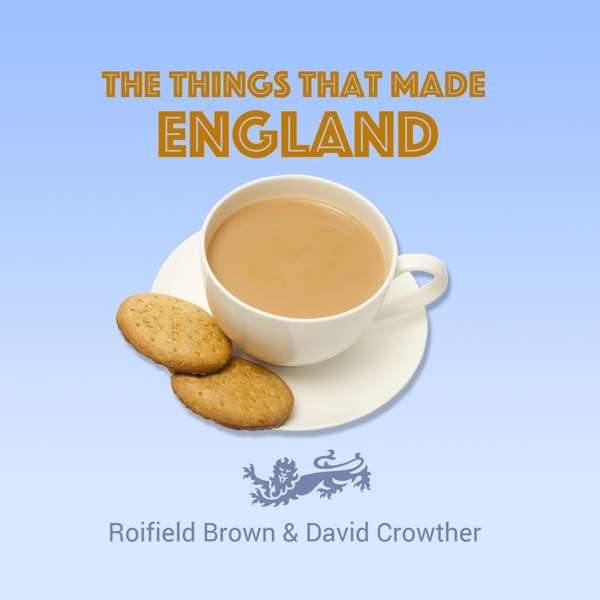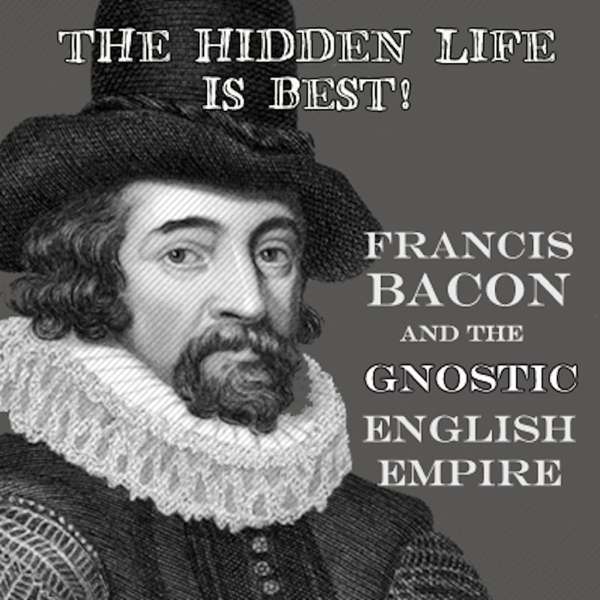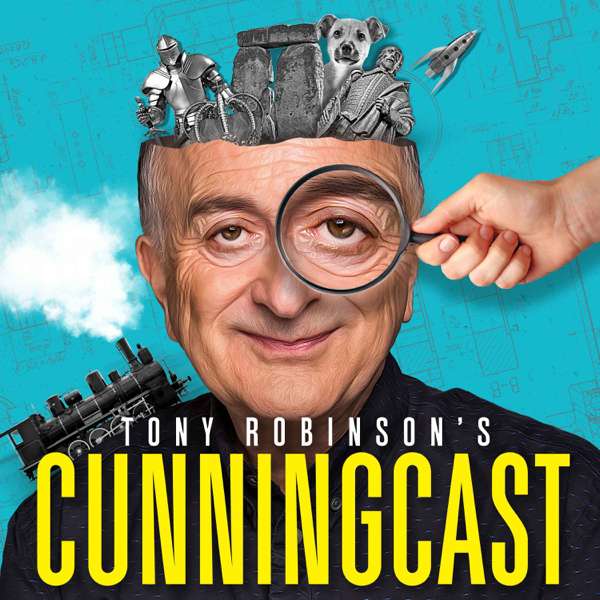American History Podcasts from Colonial Williamsburg
- Home
- Top Charts
- Top Networks
- Top Apps
- Top Independents
- Top Podfluencers
- Top Picks
- Top Business Podcasts
- Top True Crime Podcasts
- Top Finance Podcasts
- Top Comedy Podcasts
- Top Music Podcasts
- Top Womens Podcasts
- Top Kids Podcasts
- Top Sports Podcasts
- Top News Podcasts
- Top Tech Podcasts
- Top Crypto Podcasts
- Top Entrepreneurial Podcasts
- Top Fantasy Sports Podcasts
- Top Political Podcasts
- Top Science Podcasts
- Top Self Help Podcasts
- Top Sports Betting Podcasts
- Top Stocks Podcasts
- Podcast News
- About Us
- Podcast Advertising
- Contact

 Our TOPPODCAST Picks
Our TOPPODCAST Picks  Stay Connected
Stay Connected


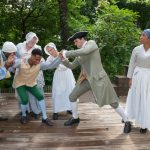 The cast and crew of Colonial Williamsburg’s groundbreaking program Journey to Redemption join to talk about how the piece was developed and why it’s so important to be having conversations surrounding racism and the history of slavery in our nation. Learn more
The cast and crew of Colonial Williamsburg’s groundbreaking program Journey to Redemption join to talk about how the piece was developed and why it’s so important to be having conversations surrounding racism and the history of slavery in our nation. Learn more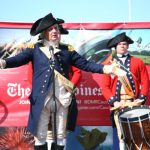 As Veterans Day approaches, the venerated Virginian veteran himself, Gen. George Washington, discusses his military past and how he believes veterans should be honored today.
As Veterans Day approaches, the venerated Virginian veteran himself, Gen. George Washington, discusses his military past and how he believes veterans should be honored today.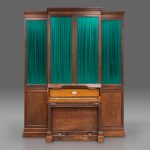 John Watson, Curator of Musical Instruments and Conservator of Instruments, discusses the Foundation’s organized piano, which first belonged to the St. George Tucker family.
John Watson, Curator of Musical Instruments and Conservator of Instruments, discusses the Foundation’s organized piano, which first belonged to the St. George Tucker family. Paul Aron, Director of Publications for Colonial Williamsburg, joins to discuss his new book “Founding Feuds: The Rivalries, Clashes, and Conflicts that Forged a Nation.” In this podcast, Paul delves into some of the most infamous feuds of the 18th and 19th centuries that included some very famous names such as Thomas Jefferson, James Madison, […]
Paul Aron, Director of Publications for Colonial Williamsburg, joins to discuss his new book “Founding Feuds: The Rivalries, Clashes, and Conflicts that Forged a Nation.” In this podcast, Paul delves into some of the most infamous feuds of the 18th and 19th centuries that included some very famous names such as Thomas Jefferson, James Madison, […]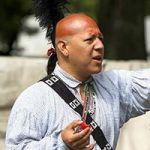 Each year, Colonial Williamsburg hosts Return of the Cherokee. This special event draws hundreds to observe Cherokee culture as it was in the 18th century when members would come to Williamsburg for trade, diplomacy, or even education. Buck Woodard with Colonial Williamsburg’s American Indian Initiative joins to explain some of the exciting updates to this […]
Each year, Colonial Williamsburg hosts Return of the Cherokee. This special event draws hundreds to observe Cherokee culture as it was in the 18th century when members would come to Williamsburg for trade, diplomacy, or even education. Buck Woodard with Colonial Williamsburg’s American Indian Initiative joins to explain some of the exciting updates to this […] Stephen Seals joins to discuss some of the powerful African American programming available during Black History Month and beyond in 2016. Hear some of his favorites and why it’s so important to tell the stories of half of the population of Williamsburg in the 18th century.
Stephen Seals joins to discuss some of the powerful African American programming available during Black History Month and beyond in 2016. Hear some of his favorites and why it’s so important to tell the stories of half of the population of Williamsburg in the 18th century.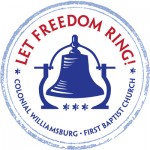 Colonial Williamsburg and First Baptist Church have joined together for the Let Freedom Ring Challenge. Americans from across the nation are invited to ring the First Baptist Church bell in the name of freedom and equality throughout the month of February and beyond.
Colonial Williamsburg and First Baptist Church have joined together for the Let Freedom Ring Challenge. Americans from across the nation are invited to ring the First Baptist Church bell in the name of freedom and equality throughout the month of February and beyond.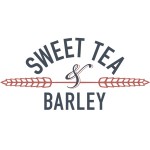 Sweet Tea & Barley is Colonial Williamsburg’s newest restaurant located in the Williamsburg Lodge. Chefs Anthony Frank and Sean Gonzalez chat about what went into creating a new southern-inspired restaurant and some of the dishes they put on the menu.
Sweet Tea & Barley is Colonial Williamsburg’s newest restaurant located in the Williamsburg Lodge. Chefs Anthony Frank and Sean Gonzalez chat about what went into creating a new southern-inspired restaurant and some of the dishes they put on the menu.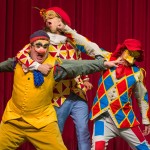 Join Harlequin, Clodpole and Cotton as they flip and tumble in Harlequin’s Holiday, a new holiday program. Meet the cast and hear how they bring the comedic pantomime stylings that were extremely popular in the 18th century to life today.
Join Harlequin, Clodpole and Cotton as they flip and tumble in Harlequin’s Holiday, a new holiday program. Meet the cast and hear how they bring the comedic pantomime stylings that were extremely popular in the 18th century to life today.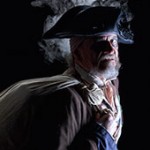 Colonial Williamsburg is embarking on its first-ever Halloween experience. The infamous pirate, Blackbeard, has returned to seek revenge after members of his crew were tried and executed in Williamsburg.
Colonial Williamsburg is embarking on its first-ever Halloween experience. The infamous pirate, Blackbeard, has returned to seek revenge after members of his crew were tried and executed in Williamsburg.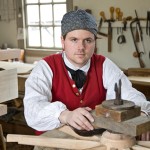 The wheel may be one of geometry’s simplest shapes, but the technology behind its creation is surprisingly complex. Add to that the variations among English wheels, French wheels, carriage wheels and cannon wheels, and the story gets even deeper. Colonial Williamsburg wheelwrights apply their expertise to the challenge of recreating the wheel for a French […]
The wheel may be one of geometry’s simplest shapes, but the technology behind its creation is surprisingly complex. Add to that the variations among English wheels, French wheels, carriage wheels and cannon wheels, and the story gets even deeper. Colonial Williamsburg wheelwrights apply their expertise to the challenge of recreating the wheel for a French […]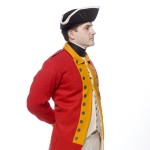 The thrilling RevQuest: Save The Revolution™ series opens its fifth season with a new spy plot: The King’s Advance. Dive headfirst into Revolutionary history as you join the service of secret intelligence gatherers. Gather clues, crack codes, meet with covert agents, and text your secrets to receive instructions.
The thrilling RevQuest: Save The Revolution™ series opens its fifth season with a new spy plot: The King’s Advance. Dive headfirst into Revolutionary history as you join the service of secret intelligence gatherers. Gather clues, crack codes, meet with covert agents, and text your secrets to receive instructions.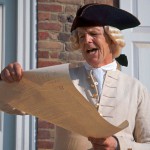 Hear the Declaration of Independence read in its entirety by renowned Thomas Jefferson interpreter Bill Barker.
Hear the Declaration of Independence read in its entirety by renowned Thomas Jefferson interpreter Bill Barker.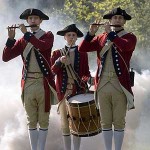 The piercing fife, the thundering drum: both can be heard over the din of battle, making them a crucial means of communication for commands like parley, cease fire, and retreat. How does this combination work?
The piercing fife, the thundering drum: both can be heard over the din of battle, making them a crucial means of communication for commands like parley, cease fire, and retreat. How does this combination work?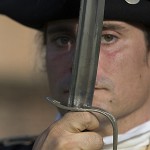 The men who served in the Revolutionary War share much in common with their modern-day brothers. The sacrifices of friendship, safety, and security unite soldiers across time. Remember their devotion and support them when they come home, urges Lieutenant Colonel James Innes, portrayed by Nat Lasley.
The men who served in the Revolutionary War share much in common with their modern-day brothers. The sacrifices of friendship, safety, and security unite soldiers across time. Remember their devotion and support them when they come home, urges Lieutenant Colonel James Innes, portrayed by Nat Lasley.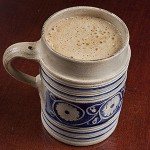 Chowning’s Tavern is reborn as an alehouse: a rough-and-rugged sanctuary for the colonial man in search of an ale. Listen as curator Amanda Keller and Director Department of Architectural Preservation Matt Webster describe the choices they made to re-open the doors to a more authentic past.
Chowning’s Tavern is reborn as an alehouse: a rough-and-rugged sanctuary for the colonial man in search of an ale. Listen as curator Amanda Keller and Director Department of Architectural Preservation Matt Webster describe the choices they made to re-open the doors to a more authentic past.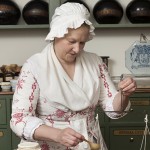 Options for cancer detection and treatment were few in the 18th century. Medical Historian Sharon Cotner lays out some of the common practices in this week’s show.
Options for cancer detection and treatment were few in the 18th century. Medical Historian Sharon Cotner lays out some of the common practices in this week’s show.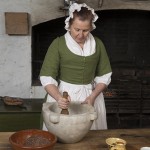 What do you use to wash the baby, clean the house, color your hair or serve for breakfast? If it’s the 18th century, the answer is alcohol. Professor Sarah Meacham describes her research for the book “Every Home a Distillery.”
What do you use to wash the baby, clean the house, color your hair or serve for breakfast? If it’s the 18th century, the answer is alcohol. Professor Sarah Meacham describes her research for the book “Every Home a Distillery.”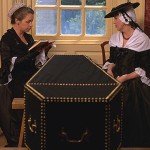 The funeral industry arises from a combination of necessity, sentimentality, and vanity. Dr. Kelly Brennan Arehart describes the path of America’s death business, and the early vestiges still with us today.
The funeral industry arises from a combination of necessity, sentimentality, and vanity. Dr. Kelly Brennan Arehart describes the path of America’s death business, and the early vestiges still with us today.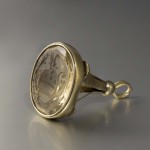 A pocket-sized ornament gives monumental insight into the private life of America’s best-known General: George Washington.
A pocket-sized ornament gives monumental insight into the private life of America’s best-known General: George Washington.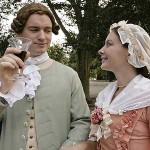 Modern marriage owes its structure to an historic form. Equal parts love, practicality, and business, today’s unions share more than you’d think with their colonial counterparts.
Modern marriage owes its structure to an historic form. Equal parts love, practicality, and business, today’s unions share more than you’d think with their colonial counterparts. A new web features follows an entering class of Fifers and Drummers on their journey through the ranks.
A new web features follows an entering class of Fifers and Drummers on their journey through the ranks. African American history is weighted with tragedy, but bringing the fullness of life to the stories of enslaved individuals is the mission of the African American History Program under the direction of Stephen Seals.
African American history is weighted with tragedy, but bringing the fullness of life to the stories of enslaved individuals is the mission of the African American History Program under the direction of Stephen Seals.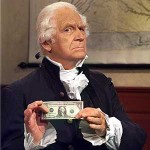 What was in George Washington’s wallet? Long before the establishment of a standard American currency, there was trade, barter and credit. How were these financial activities handled with the myriad coins and metals in circulation?
What was in George Washington’s wallet? Long before the establishment of a standard American currency, there was trade, barter and credit. How were these financial activities handled with the myriad coins and metals in circulation?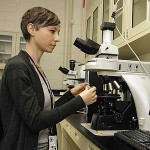 Technologies that used to be beyond reach for museum professionals now can lend new insights into the hidden compositions of materials, metals, and paints. Conservator Kirsten Moffitt explains how a spike on a screen can spot a fake or reveal a discovery.
Technologies that used to be beyond reach for museum professionals now can lend new insights into the hidden compositions of materials, metals, and paints. Conservator Kirsten Moffitt explains how a spike on a screen can spot a fake or reveal a discovery.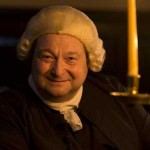 The heart of a church is its organ; and the heart of its organ is its organist. This year we celebrate the 300th anniversary of Bruton Parish Church, and the 293rd birthday of the first man to grace its organ bench: Peter Pelham. Colorful and well-connected, this musician was at the center of the American […]
The heart of a church is its organ; and the heart of its organ is its organist. This year we celebrate the 300th anniversary of Bruton Parish Church, and the 293rd birthday of the first man to grace its organ bench: Peter Pelham. Colorful and well-connected, this musician was at the center of the American […]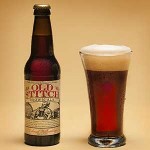 Relax with a brew from the past, courtesy of Master of Historic Foodways Frank Clark. Twenty years of study and practice have resurrected the 18th century’s favorite beer: Old Stitch.
Relax with a brew from the past, courtesy of Master of Historic Foodways Frank Clark. Twenty years of study and practice have resurrected the 18th century’s favorite beer: Old Stitch.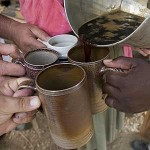 The Historic Campus of the College of William and Mary had one more secret to tell, and it was a big one. Archaeologist Andy Edwards describes the surprise, and the clues that lead them to hope they’ve stumbled upon the College’s early brewhouse.
The Historic Campus of the College of William and Mary had one more secret to tell, and it was a big one. Archaeologist Andy Edwards describes the surprise, and the clues that lead them to hope they’ve stumbled upon the College’s early brewhouse.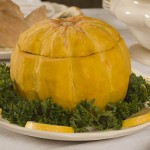 Gain a new respect for the good old pumpkin. Author Mary Miley Theobald traces the history of the venerable gourd.
Gain a new respect for the good old pumpkin. Author Mary Miley Theobald traces the history of the venerable gourd. Rats on a ship smuggle a story of transatlantic trade and a colonial global economy. It’s a big idea, but the concept is made simple by the team of writers, researchers and producers who create Colonial Williamsburg’s Emmy-winning Electronic Field Trip series.
Rats on a ship smuggle a story of transatlantic trade and a colonial global economy. It’s a big idea, but the concept is made simple by the team of writers, researchers and producers who create Colonial Williamsburg’s Emmy-winning Electronic Field Trip series.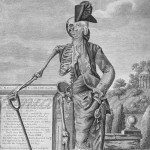 What were colonists buried in? This was a question posed to Research Librarian Juleigh Clark. Tracking down the answer led her, and us, through the history of funerals, burials, shrouds and winding sheets.
What were colonists buried in? This was a question posed to Research Librarian Juleigh Clark. Tracking down the answer led her, and us, through the history of funerals, burials, shrouds and winding sheets. It takes a lot of bricks to build a Market House and our brickmakers are busy. So it seems like a good time to revisit this October 2011 podcast about the process for the building blocks of the Historic Area. Brickmaker Jason Whitehead tells the story.
It takes a lot of bricks to build a Market House and our brickmakers are busy. So it seems like a good time to revisit this October 2011 podcast about the process for the building blocks of the Historic Area. Brickmaker Jason Whitehead tells the story.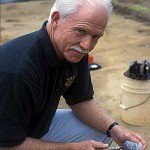 Jamestowne Island’s Director of Archeological Research and Interpretation Bill Kelso says that choosing which historic sites to protect from deterioration of all kinds is a matter of reading history backwards. We must consider “What are the priorities today, what are the legacies today of our history? And then look to what areas contributed.”
Jamestowne Island’s Director of Archeological Research and Interpretation Bill Kelso says that choosing which historic sites to protect from deterioration of all kinds is a matter of reading history backwards. We must consider “What are the priorities today, what are the legacies today of our history? And then look to what areas contributed.”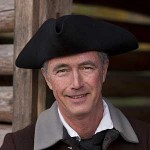 No matter where the Earth glides on its axis, the days both long and short shine on a years-worth of work on the colonial farm. At Great Hopes plantation, the turning of the seasons brings with it a task suited to the temperatures: plowing, sowing, planting and harvest. Learn the rhythm of the year with […]
No matter where the Earth glides on its axis, the days both long and short shine on a years-worth of work on the colonial farm. At Great Hopes plantation, the turning of the seasons brings with it a task suited to the temperatures: plowing, sowing, planting and harvest. Learn the rhythm of the year with […]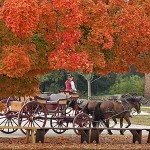 Planning the fiery colors of autumn is a year-round endeavor for Manager of Landscape Services Laura Viancour. She and her team keep Colonial Williamsburg’s trees healthy and maintained, and they inform their choices with historic documentation of the 18th-century’s treescape.
Planning the fiery colors of autumn is a year-round endeavor for Manager of Landscape Services Laura Viancour. She and her team keep Colonial Williamsburg’s trees healthy and maintained, and they inform their choices with historic documentation of the 18th-century’s treescape.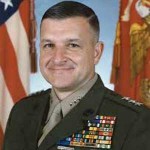 Retired US Marine Corps General Anthony Zinni has some sharp insights and powerful ideas to share in his new book, “Before the First Shots are Fired: How America Can Win or Lose off the Battlefield.” Listen this week as he previews some of the philosophies he shares in his fourth book.
Retired US Marine Corps General Anthony Zinni has some sharp insights and powerful ideas to share in his new book, “Before the First Shots are Fired: How America Can Win or Lose off the Battlefield.” Listen this week as he previews some of the philosophies he shares in his fourth book.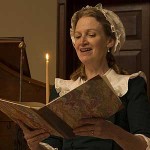 The 2014 Early Music Festival promises to be a lively one. With instruments, scores, and performances of an 18th-century vintage, you’ll be surrounded by the sounds of another century. Enjoy this musical preview featuring Jane Hanson and Michael Monaco from the opera “Thomas and Sally.”
The 2014 Early Music Festival promises to be a lively one. With instruments, scores, and performances of an 18th-century vintage, you’ll be surrounded by the sounds of another century. Enjoy this musical preview featuring Jane Hanson and Michael Monaco from the opera “Thomas and Sally.”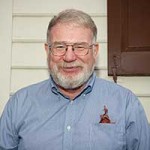 Intelligence born of practice combines with the study of science to complete the historic tradesman’s store of knowledge. There was no better spokesman for the Historic Trades program than Director Jay Gaynor. Jay recently passed away and we miss him. This encore podcast is dedicated to him.
Intelligence born of practice combines with the study of science to complete the historic tradesman’s store of knowledge. There was no better spokesman for the Historic Trades program than Director Jay Gaynor. Jay recently passed away and we miss him. This encore podcast is dedicated to him.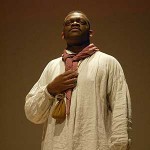 When people from various regions of Africa were forcefully transported to the colonies, they brought nothing with them but the clothes on their backs and the beliefs of their hearts. This latter possession varied widely by region and tradition, but was to each a fundamental part of daily life. Historian Harvey Bakari describes the African […]
When people from various regions of Africa were forcefully transported to the colonies, they brought nothing with them but the clothes on their backs and the beliefs of their hearts. This latter possession varied widely by region and tradition, but was to each a fundamental part of daily life. Historian Harvey Bakari describes the African […]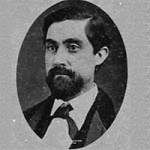 Native son of the colonial elite, Decimus Et Ultimus Barziza fulfills his family’s legacy of prominence with his career in the Civil War. Historian Drew Gruber describes with passion the path of this “average” Civil War soldier, a story that includes a wound at Little Round Top, a prison break, and a boisterous post-war career […]
Native son of the colonial elite, Decimus Et Ultimus Barziza fulfills his family’s legacy of prominence with his career in the Civil War. Historian Drew Gruber describes with passion the path of this “average” Civil War soldier, a story that includes a wound at Little Round Top, a prison break, and a boisterous post-war career […]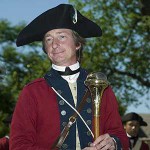 For Drum Major Lance Pedigo, leading comes naturally. All year round and at any time of day, chances are good that you’ll see him marching at the front of the Fifes and Drums, keeping time and metering the pace of the corps of young men and women who make the music of history ring through […]
For Drum Major Lance Pedigo, leading comes naturally. All year round and at any time of day, chances are good that you’ll see him marching at the front of the Fifes and Drums, keeping time and metering the pace of the corps of young men and women who make the music of history ring through […]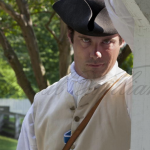 Research Librarian Allison Heinbaugh stalked the stacks of the John D. Rockefeller Jr. Library looking for evidence of spies and spycraft in the 18th century. The bibliography she compiled tells its own story of loyalty, secrecy, and stealth.
Research Librarian Allison Heinbaugh stalked the stacks of the John D. Rockefeller Jr. Library looking for evidence of spies and spycraft in the 18th century. The bibliography she compiled tells its own story of loyalty, secrecy, and stealth.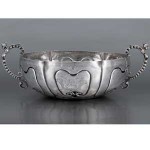 Rare and beautiful silver forms share the social history of their users and their makers. Visit “A Handsome Cupboard of Plate,” an exhibit open now at the Art Museums of Colonial Williamsburg.
Rare and beautiful silver forms share the social history of their users and their makers. Visit “A Handsome Cupboard of Plate,” an exhibit open now at the Art Museums of Colonial Williamsburg.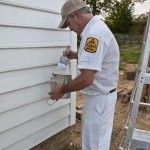 Watching paint dry turns into a fascinating journey through time, history, science and technology when the Department of Architectural Preservation gets involved. Director Matt Webster shares the story behind the changing paint colors in the Historic Area, and why the colors you’ll see on the walls are a window to the 18th century.
Watching paint dry turns into a fascinating journey through time, history, science and technology when the Department of Architectural Preservation gets involved. Director Matt Webster shares the story behind the changing paint colors in the Historic Area, and why the colors you’ll see on the walls are a window to the 18th century. Presidential Historian Michael Beschloss visits Colonial Williamsburg and shares his views on the changes technology brings to politics and the presidency, and ruminates on the importance of place.
Presidential Historian Michael Beschloss visits Colonial Williamsburg and shares his views on the changes technology brings to politics and the presidency, and ruminates on the importance of place.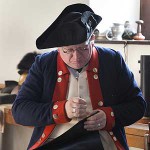 From its origins in Chinese potions for immortality to the agent of death on the battlefield, the history of gunpowder is one of chemistry, ingenuity, and violence. Armorer Ron Potts fascinates with the tale.
From its origins in Chinese potions for immortality to the agent of death on the battlefield, the history of gunpowder is one of chemistry, ingenuity, and violence. Armorer Ron Potts fascinates with the tale.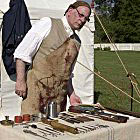 More gruesome than the injuries of battle were the means of mending them: field medicine offered no anesthesia, no modern antiseptics, and no antibiotics. David Podolfino interprets the life and duties of the military surgeon.
More gruesome than the injuries of battle were the means of mending them: field medicine offered no anesthesia, no modern antiseptics, and no antibiotics. David Podolfino interprets the life and duties of the military surgeon.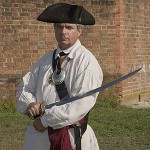 Pass through the gates of the military encampment and you’ll become the newest member of the Williamsburg Regiment. Learn to drill, march, and think as a unit, leaving behind the life you knew for a chance at the future you hope for. Our guest Dale Smoot commands the recruits.
Pass through the gates of the military encampment and you’ll become the newest member of the Williamsburg Regiment. Learn to drill, march, and think as a unit, leaving behind the life you knew for a chance at the future you hope for. Our guest Dale Smoot commands the recruits.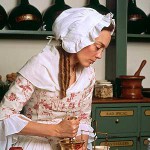 The common cold was a nuisance our forbears suffered in much the same way we do today. But what remedies were uniquely colonial? Eighteenth-century apothecarist Robin Kipps shares the causes and eases for the cold.
The common cold was a nuisance our forbears suffered in much the same way we do today. But what remedies were uniquely colonial? Eighteenth-century apothecarist Robin Kipps shares the causes and eases for the cold.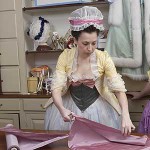 Draping, cutting, sewing, and trim: these are the hallmarks of the milliner and mantua-maker’s craft. Apprentice Sarah Woodyard is near completion of her apprenticeship, and at the threshold of attaining journeywoman status.
Draping, cutting, sewing, and trim: these are the hallmarks of the milliner and mantua-maker’s craft. Apprentice Sarah Woodyard is near completion of her apprenticeship, and at the threshold of attaining journeywoman status.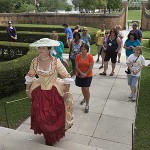 In 2014, the Colonial Williamsburg Teacher Institute takes a moment to look back on 25 years of preparing teachers to bring the thrill of America’s revolutionary era back into the classroom.
In 2014, the Colonial Williamsburg Teacher Institute takes a moment to look back on 25 years of preparing teachers to bring the thrill of America’s revolutionary era back into the classroom.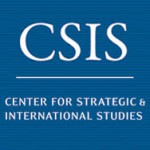 America’s colonial history offers a unique perspective on the modern stage. What inspiration, ideas, and cautions can today’s global revolutionaries draw from the 1776 uprising in the British colonies in America? The Center for Strategic and International Studies brings together leaders, scholars, and historians to debate some of the questions facing emerging democracies.
America’s colonial history offers a unique perspective on the modern stage. What inspiration, ideas, and cautions can today’s global revolutionaries draw from the 1776 uprising in the British colonies in America? The Center for Strategic and International Studies brings together leaders, scholars, and historians to debate some of the questions facing emerging democracies.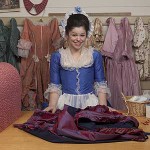 Milliners stood at the hub of a global trade in everything from handkerchiefs to pocket pistols, purveyors of a thousand fashionable items. The Margaret Hunter shop marks 60 years of interpreting the milliner’s trade. Apprentice milliner and mantua maker Abby Cox shares the history of the little shop on Duke of Gloucester Street.
Milliners stood at the hub of a global trade in everything from handkerchiefs to pocket pistols, purveyors of a thousand fashionable items. The Margaret Hunter shop marks 60 years of interpreting the milliner’s trade. Apprentice milliner and mantua maker Abby Cox shares the history of the little shop on Duke of Gloucester Street.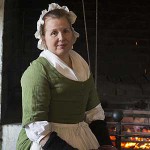 Beef hearts, pig bladders, tripe, and lots and lots of butter are ingredients kitchen apprentice Kim Kosta will come to know well as she sharpens her skills in the Palace kitchen. As she rises to achieve journeyman status, she’ll have to master 25 recipes at seven levels of difficulty.
Beef hearts, pig bladders, tripe, and lots and lots of butter are ingredients kitchen apprentice Kim Kosta will come to know well as she sharpens her skills in the Palace kitchen. As she rises to achieve journeyman status, she’ll have to master 25 recipes at seven levels of difficulty.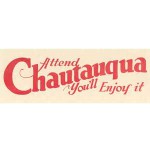 The Revolutionary City finds resonance and relevance across the country and around the world in a vibrant partnership with the Chautauqua Institution of New York. “We walk in the same intellectual waters,” says Colonial Williamsburg Foundation President Colin Campbell in this interview with Chautauqua’s President Tom Becker.
The Revolutionary City finds resonance and relevance across the country and around the world in a vibrant partnership with the Chautauqua Institution of New York. “We walk in the same intellectual waters,” says Colonial Williamsburg Foundation President Colin Campbell in this interview with Chautauqua’s President Tom Becker. Preserving genetic diversity one lamb at a time: Manager of Rare Breeds Elaine Shirley talks about the 2009 generation of Leicester Longwools.
Preserving genetic diversity one lamb at a time: Manager of Rare Breeds Elaine Shirley talks about the 2009 generation of Leicester Longwools.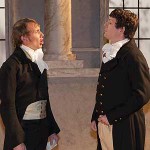 Civil war is bloody, regressive, and destructive. Revolution is forward-looking, positive, and regenerative. Yet, says historian David Armitage, even the noblest revolution bears traces of the primitive violence of civil war.
Civil war is bloody, regressive, and destructive. Revolution is forward-looking, positive, and regenerative. Yet, says historian David Armitage, even the noblest revolution bears traces of the primitive violence of civil war. Ongoing excavations at James Fort reveal a surprising discovery: the site of the 1608 church where Pocahontas married John Rolfe. Chief Archaeologist Bill Kelso shares the excitement of rediscovery.
Ongoing excavations at James Fort reveal a surprising discovery: the site of the 1608 church where Pocahontas married John Rolfe. Chief Archaeologist Bill Kelso shares the excitement of rediscovery.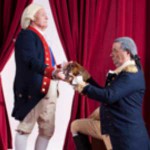 In 1776, England had every expectation of winning a war with her upstart American colonies, and rightly so. And what if the war had gone their way? This is the premise of a class of fiction called “alternate history,” and Director of Publications Paul Aron has found some food for thought in its reimagined histories.
In 1776, England had every expectation of winning a war with her upstart American colonies, and rightly so. And what if the war had gone their way? This is the premise of a class of fiction called “alternate history,” and Director of Publications Paul Aron has found some food for thought in its reimagined histories.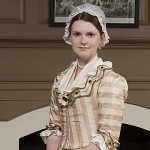 Founding mothers increasingly are recognized for their roles in Revolutionary America. Resolute, intelligent, and insightful, these women shaped history with their words, letters, and actions. Martha Jefferson joins the cast of players in Colonial Williamsburg’s Revolutionary City, shedding light on the central relationship in Thomas Jefferson’s life.
Founding mothers increasingly are recognized for their roles in Revolutionary America. Resolute, intelligent, and insightful, these women shaped history with their words, letters, and actions. Martha Jefferson joins the cast of players in Colonial Williamsburg’s Revolutionary City, shedding light on the central relationship in Thomas Jefferson’s life.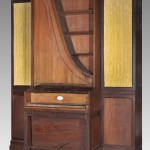 A new blog launching March 3 follows the restorative conservation of a rare survival: an organized piano. A piano combined with a pipe organ, this unique instrument towered at nine feet tall and seven feet wide. Its restoration raises questions at every step. Repairing a broken element could mean erasing a piece of the object’s […]
A new blog launching March 3 follows the restorative conservation of a rare survival: an organized piano. A piano combined with a pipe organ, this unique instrument towered at nine feet tall and seven feet wide. Its restoration raises questions at every step. Repairing a broken element could mean erasing a piece of the object’s […]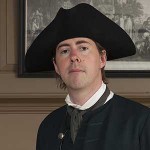 Williamsburg was a town of revolutionaries, but not everyone thought rebellion was a good idea. Men like William Hunter Jr., printer of the Virginia Gazette, stayed loyal to king and country. Actor-Interpreter Sam Miller explains how patriotic fervor made life difficult for those men and women who opposed it.
Williamsburg was a town of revolutionaries, but not everyone thought rebellion was a good idea. Men like William Hunter Jr., printer of the Virginia Gazette, stayed loyal to king and country. Actor-Interpreter Sam Miller explains how patriotic fervor made life difficult for those men and women who opposed it.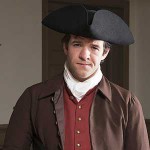 A quiet, restrained genius is animated on the streets of the Revolutionary City by Actor-Interpreter Bryan Austin. Hear his approach to filling the shoes of the fourth president.
A quiet, restrained genius is animated on the streets of the Revolutionary City by Actor-Interpreter Bryan Austin. Hear his approach to filling the shoes of the fourth president.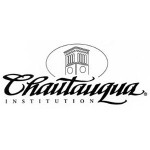 Throughout history, the desire for justice and human rights has motivated the oppressed to demand political change and the promise of a better future. February 21st and 22nd, Colonial Williamsburg and the Chautauqua Institution present “Turning Worlds Upside Down: Liberty and Democracy in Revolutionary Times,” an exploration of revolutions past and present. Creative Director for […]
Throughout history, the desire for justice and human rights has motivated the oppressed to demand political change and the promise of a better future. February 21st and 22nd, Colonial Williamsburg and the Chautauqua Institution present “Turning Worlds Upside Down: Liberty and Democracy in Revolutionary Times,” an exploration of revolutions past and present. Creative Director for […]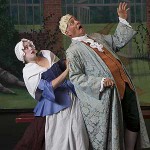 Onstage, bombastic actors bellowed. Backstage, privileged gentlemen roamed free. Enter David Garrick, the man who changed acting and reformed the theater. His innovations are with us yet, from footlights to scrims. Supervisor of Performing Arts Kevin Ernst tells the history.
Onstage, bombastic actors bellowed. Backstage, privileged gentlemen roamed free. Enter David Garrick, the man who changed acting and reformed the theater. His innovations are with us yet, from footlights to scrims. Supervisor of Performing Arts Kevin Ernst tells the history.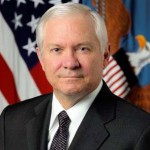 Former head of the CIA and Secretary of Defense in Republican and Democratic administrations, Robert Gates is a man who knows something about politics, pragmatism, and compromise. He sits down with us this week to talk about the portability of American values, the constants of conflict, and the nation’s unique fortune in the caliber of […]
Former head of the CIA and Secretary of Defense in Republican and Democratic administrations, Robert Gates is a man who knows something about politics, pragmatism, and compromise. He sits down with us this week to talk about the portability of American values, the constants of conflict, and the nation’s unique fortune in the caliber of […]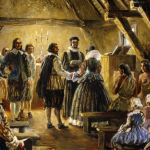 What did Pocahontas wear to her wedding? History doesn’t tell us, but research, an educated guess, and a fleet of seamstresses will outfit the bride in a stunning ensemble for the commemoration of the 400th anniversary of John Rolfe’s marriage to Pocahontas in April 2014. Brenda Rosseau of the Costume Design Center describes the choice […]
What did Pocahontas wear to her wedding? History doesn’t tell us, but research, an educated guess, and a fleet of seamstresses will outfit the bride in a stunning ensemble for the commemoration of the 400th anniversary of John Rolfe’s marriage to Pocahontas in April 2014. Brenda Rosseau of the Costume Design Center describes the choice […]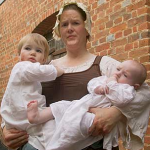 Historian Cathy Hellier describes the poignant histories of children left without parents. The question of providing for colonial orphans was split between the courts and the children’s caretakers. Listen this week to learn how colonial society looked after its littlest citizens.
Historian Cathy Hellier describes the poignant histories of children left without parents. The question of providing for colonial orphans was split between the courts and the children’s caretakers. Listen this week to learn how colonial society looked after its littlest citizens.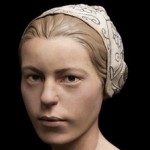 A gruesome relic informs a desperate history. Historic Jamestowne’s Senior Archaeological Curator Bly Straube describes the find that let scientists and historians confirm the tales of cannibalism in America’s fledgling years.
A gruesome relic informs a desperate history. Historic Jamestowne’s Senior Archaeological Curator Bly Straube describes the find that let scientists and historians confirm the tales of cannibalism in America’s fledgling years.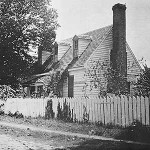 Tantalizing new research points to an impossible conclusion: the Reconstruction may have overlooked an original 18th-century building. More remarkable still is the possibility that it may have housed Virginia’s first school for the education of black children: the Bray School. Archaeologist Mark Kostro details the story the soil tells as his team hunts for the […]
Tantalizing new research points to an impossible conclusion: the Reconstruction may have overlooked an original 18th-century building. More remarkable still is the possibility that it may have housed Virginia’s first school for the education of black children: the Bray School. Archaeologist Mark Kostro details the story the soil tells as his team hunts for the […]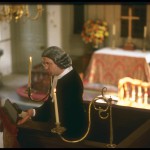 Reverend John Camm’s message to his 18th-century flock bears surprising relevance for today. Historic Interpreter Stephen Moore shares some delightful tidbits from his program, “A Sermon for the Season.”
Reverend John Camm’s message to his 18th-century flock bears surprising relevance for today. Historic Interpreter Stephen Moore shares some delightful tidbits from his program, “A Sermon for the Season.”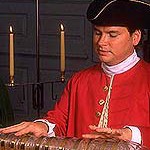 Christmas tunes reverberate from an instrument you’ve probably never heard before. Hear Dean Shostak play Ben Franklin’s invention: the glass armonica.
Christmas tunes reverberate from an instrument you’ve probably never heard before. Hear Dean Shostak play Ben Franklin’s invention: the glass armonica.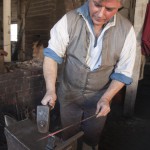 Anderson’s Armoury opens after years of research and reconstruction. Two of the project’s leads talk about the culmination of a project that changes the shape of the Revolutionary City and the narrative of a country at war.
Anderson’s Armoury opens after years of research and reconstruction. Two of the project’s leads talk about the culmination of a project that changes the shape of the Revolutionary City and the narrative of a country at war.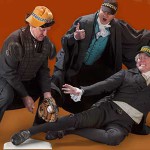 What are the three branches of government? Only 38% of Americans can answer that question correctly. A playful Electronic Field Trip premiering October 2013 lays out the separation of powers using a baseball metaphor that keeps a dense subject lighthearted. Learn more about the new show with our guest Cash Arehart.
What are the three branches of government? Only 38% of Americans can answer that question correctly. A playful Electronic Field Trip premiering October 2013 lays out the separation of powers using a baseball metaphor that keeps a dense subject lighthearted. Learn more about the new show with our guest Cash Arehart.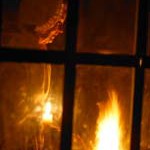 A chilling specter of the 18th century reaches its icy grasp to the present day. Hear the story of Moses Riggs, a man possessed.
A chilling specter of the 18th century reaches its icy grasp to the present day. Hear the story of Moses Riggs, a man possessed.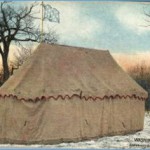 George Washington slept here, ate here, planned here, and plotted here through the eight years of the Revolution. A joint project with the Museum of the American Revolution is reconstructing the tent that Washington called home during the war. Learn more about the great man when you see his life in the field.
George Washington slept here, ate here, planned here, and plotted here through the eight years of the Revolution. A joint project with the Museum of the American Revolution is reconstructing the tent that Washington called home during the war. Learn more about the great man when you see his life in the field.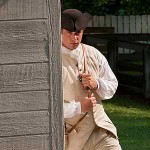 An onsite game embroils players in a Revolutionary spy’s world of danger, loyalty, codes and plots. “The Black Chambers” is game three in “RevQuest: Save the Revolution” series.
An onsite game embroils players in a Revolutionary spy’s world of danger, loyalty, codes and plots. “The Black Chambers” is game three in “RevQuest: Save the Revolution” series.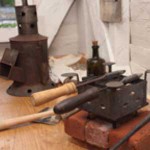 For the first time in decades, a new historic trade joins the tradition of craft in the Historic Area. This week, meet Steve Delisle, the first tinsmith in the Revolutionary City.
For the first time in decades, a new historic trade joins the tradition of craft in the Historic Area. This week, meet Steve Delisle, the first tinsmith in the Revolutionary City. Students discover the power of citizenship when they review policy, suggest changes, and find ways to get involved. It’s all happening on a new website: The Virtual Republic.
Students discover the power of citizenship when they review policy, suggest changes, and find ways to get involved. It’s all happening on a new website: The Virtual Republic.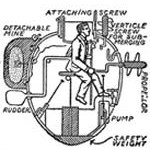 The first combat submarine was invented as a vehicle to transport underwater bombs. Jerry Roberts of the Connecticut River Museum tells the story of an intrepid American inventor.
The first combat submarine was invented as a vehicle to transport underwater bombs. Jerry Roberts of the Connecticut River Museum tells the story of an intrepid American inventor.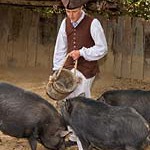 The Ossabaw Hog shares its unique genetic legacy with visitors to Colonial Williamsburg’s Great Hopes Plantation. Historic Farmer Wayne Randolph talks about the rare breed.
The Ossabaw Hog shares its unique genetic legacy with visitors to Colonial Williamsburg’s Great Hopes Plantation. Historic Farmer Wayne Randolph talks about the rare breed.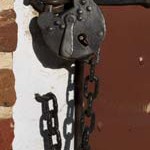 Buildings bear silent witness to the history that happens inside them. Conservator Matt Webster makes sure structures live to tell their tales.
Buildings bear silent witness to the history that happens inside them. Conservator Matt Webster makes sure structures live to tell their tales. Sharp quills did the bidding of the even sharper intellects of the Revolution’s founding mothers. Listen to the words of Mercy Otis Warren and Abigail Adams, voiced by Abigail Schumann.
Sharp quills did the bidding of the even sharper intellects of the Revolution’s founding mothers. Listen to the words of Mercy Otis Warren and Abigail Adams, voiced by Abigail Schumann.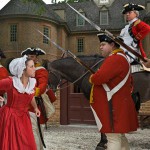 Would Benedict Arnold be remembered as a hero if he had picked the winning side? Interpreter Scott Green shares the rise and demise of a brilliant strategist.
Would Benedict Arnold be remembered as a hero if he had picked the winning side? Interpreter Scott Green shares the rise and demise of a brilliant strategist.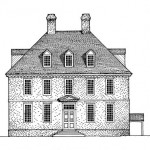 The Indian School at the College of William and Mary was conceived for the religious conversion of Indians. Professor Jim Axtell shares the storied building’s history.
The Indian School at the College of William and Mary was conceived for the religious conversion of Indians. Professor Jim Axtell shares the storied building’s history.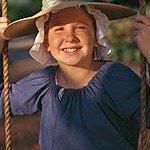 History is in the hands of Junior Interpreters all summer long, as the story of the Revolution expands to include a kid’s perspective. Pam Blount tells us how sites involve children in the 18th century and today.
History is in the hands of Junior Interpreters all summer long, as the story of the Revolution expands to include a kid’s perspective. Pam Blount tells us how sites involve children in the 18th century and today.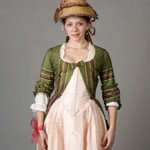 Southerners adapt to summer temperatures in every century. Curator Linda Baumgarten tells us how to dress for the heat in colonial style on this week’s podcast.
Southerners adapt to summer temperatures in every century. Curator Linda Baumgarten tells us how to dress for the heat in colonial style on this week’s podcast.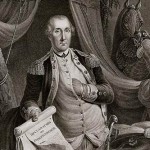 Myths abound in history’s retelling. Historian and author Mary Miley Theobald shares some of her favorites.
Myths abound in history’s retelling. Historian and author Mary Miley Theobald shares some of her favorites.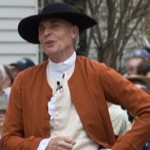 An ordinary tavern keeper makes the choice to side with the patriot cause, risking his livelihood and his reputation. Chris Allen portrays James Southall for Colonial Williamsburg.
An ordinary tavern keeper makes the choice to side with the patriot cause, risking his livelihood and his reputation. Chris Allen portrays James Southall for Colonial Williamsburg.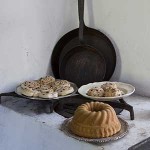 Apprentice cook Melissa Blank learns her way around a 200-year-old kitchen.
Apprentice cook Melissa Blank learns her way around a 200-year-old kitchen. Fort Nelson is under attack, and its defenders are outnumbered 10:1. Should they stay and fight, or retreat? This is the central question in Courage or Cowardice, a Colonial Williamsburg evening program.
Fort Nelson is under attack, and its defenders are outnumbered 10:1. Should they stay and fight, or retreat? This is the central question in Courage or Cowardice, a Colonial Williamsburg evening program.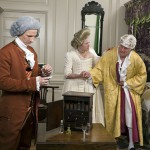 King George is remembered as “The Mad King,” and “The King Who Lost America.” Was he insane, or did his doctors mistreat a medical condition? Author Ed Crews examines the evidence in his article “The Poisoning of King George” in the journal Colonial Williamsburg.
King George is remembered as “The Mad King,” and “The King Who Lost America.” Was he insane, or did his doctors mistreat a medical condition? Author Ed Crews examines the evidence in his article “The Poisoning of King George” in the journal Colonial Williamsburg.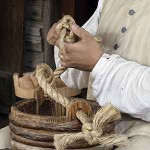 The compromise between using authentic materials and following authentic practices requires finding a delicate balance. Cooper Jon Hallman describes the challenges of representing 18th-century trades as realistically as modern conditions allow.
The compromise between using authentic materials and following authentic practices requires finding a delicate balance. Cooper Jon Hallman describes the challenges of representing 18th-century trades as realistically as modern conditions allow.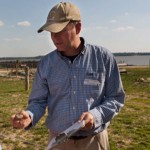 Evidence of blacksmiths and other tradespeople surfaces at James Fort. Archaeologist Dave Givens talks about seeing the fort populated with industry and trade.
Evidence of blacksmiths and other tradespeople surfaces at James Fort. Archaeologist Dave Givens talks about seeing the fort populated with industry and trade.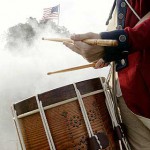 Members of the Senior Corps of the Colonial Williamsburg Fifes and Drums play the tunes that directed a soldier through his day, from morning’s first light to the night’s last ale.
Members of the Senior Corps of the Colonial Williamsburg Fifes and Drums play the tunes that directed a soldier through his day, from morning’s first light to the night’s last ale.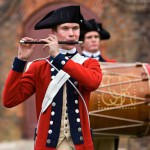 Colonial Williamsburg Fifes and Drums introduces the instruments designed to be heard under cannon fire and over musket volleys. Learn the history of their distinctive sound with Amy Miller and members of the Senior Fife and Drum Corps.
Colonial Williamsburg Fifes and Drums introduces the instruments designed to be heard under cannon fire and over musket volleys. Learn the history of their distinctive sound with Amy Miller and members of the Senior Fife and Drum Corps.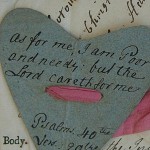 London’s foundling children were orphans in the midst of a crowded city. The exhibit Threads of Feeling tells their stories, as well as those of their mothers.
London’s foundling children were orphans in the midst of a crowded city. The exhibit Threads of Feeling tells their stories, as well as those of their mothers.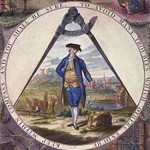 George Washington copied out and adhered to 110 simple rules for polite society. What were they, and do they still apply today? Historian Cathy Hellier dissects the codes of 18th-century conduct.
George Washington copied out and adhered to 110 simple rules for polite society. What were they, and do they still apply today? Historian Cathy Hellier dissects the codes of 18th-century conduct.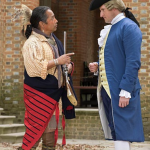 What were the types and tones of interactions among European settlers, native peoples, and Africans in colonial Virginia? American Indian Initiative Manager Buck Woodard sets the scene.
What were the types and tones of interactions among European settlers, native peoples, and Africans in colonial Virginia? American Indian Initiative Manager Buck Woodard sets the scene.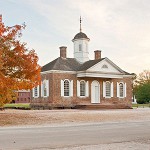 The Courthouse is a symbol of the presence of the law in the colonial community. Tom Hay tells this original building’s history.
The Courthouse is a symbol of the presence of the law in the colonial community. Tom Hay tells this original building’s history.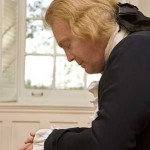 For Thomas Jefferson, religion was a matter between a man and his god, with no interference in between. Listen to Bill Barker’s portrayal.
For Thomas Jefferson, religion was a matter between a man and his god, with no interference in between. Listen to Bill Barker’s portrayal.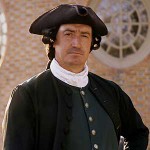 Patrick Henry would have the church provide social services that today we relegate to the state. Listen to his religious views presented in his Assessment Bill of 1784. Richard Schumann interprets.
Patrick Henry would have the church provide social services that today we relegate to the state. Listen to his religious views presented in his Assessment Bill of 1784. Richard Schumann interprets.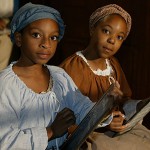 Williamsburg’s first school for African-American children is led by a tireless schoolmistress. Interpreter Antoinette Brennan tells the life story of Anne Wager, a woman to be remembered.
Williamsburg’s first school for African-American children is led by a tireless schoolmistress. Interpreter Antoinette Brennan tells the life story of Anne Wager, a woman to be remembered.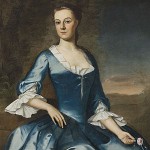 Painters and Paintings of the Early American South is a new exhibit focusing on the interrelatedness of Southern artists and subjects. See it at the Art Museums of Colonial Williamsburg.
Painters and Paintings of the Early American South is a new exhibit focusing on the interrelatedness of Southern artists and subjects. See it at the Art Museums of Colonial Williamsburg.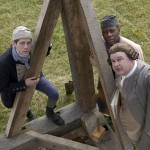 Colonial Williamsburg’s Architectural Research department authors “The Chesapeake House,” a book devoted to the study of the region’s architecture and influences. Architectural Historian Carl Lounsbury outlines the study.
Colonial Williamsburg’s Architectural Research department authors “The Chesapeake House,” a book devoted to the study of the region’s architecture and influences. Architectural Historian Carl Lounsbury outlines the study. Film and television actress Erica Hubbard appears at Colonial Williamsburg in a live performance March 9 as part of Steadfast Spirits Weekend. Hear how she prepares to take on a period role, and the inspiration she finds in Lydia Broadnax’s story.
Film and television actress Erica Hubbard appears at Colonial Williamsburg in a live performance March 9 as part of Steadfast Spirits Weekend. Hear how she prepares to take on a period role, and the inspiration she finds in Lydia Broadnax’s story. A 130-year span of keyboard instruments documents a revolution in colonists’ musical tastes. See the progression in “Changing Keys,” a new exhibit at the Museums of Colonial Williamsburg. Curator John Watson describes the outlay.
A 130-year span of keyboard instruments documents a revolution in colonists’ musical tastes. See the progression in “Changing Keys,” a new exhibit at the Museums of Colonial Williamsburg. Curator John Watson describes the outlay.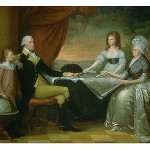 George and Martha Washington answer audience-submitted questions about their marriage, their partnership, and the Revolution in this special Presidents Day podcast.
George and Martha Washington answer audience-submitted questions about their marriage, their partnership, and the Revolution in this special Presidents Day podcast.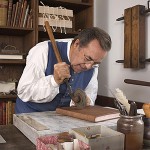 Books were treasure when each tome was made in 28 separate stages. Hear how the trade is preserved by Master Bookbinder Bruce Plumley.
Books were treasure when each tome was made in 28 separate stages. Hear how the trade is preserved by Master Bookbinder Bruce Plumley.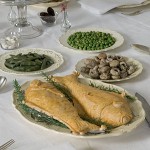 Setting the table for a 200-year old dinner takes research and clever re-creation. Antique plates and platters bear historic foods in dining settings that reflect the season and the host. Curator Amanda Keller works with a team from the museums to lay out authentic feasts.
Setting the table for a 200-year old dinner takes research and clever re-creation. Antique plates and platters bear historic foods in dining settings that reflect the season and the host. Curator Amanda Keller works with a team from the museums to lay out authentic feasts.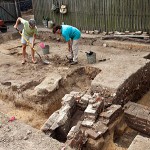 The 2012 summer digging season yielded everything from human and animal burials to sawpits and fencelines. Staff Archaeologist Meredith Poole puts the clues into context.
The 2012 summer digging season yielded everything from human and animal burials to sawpits and fencelines. Staff Archaeologist Meredith Poole puts the clues into context.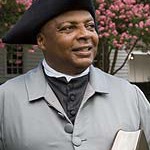 A powerful agent of change during a time of the greatest repression, minister Gowan Pamphlet shared a message of hope and dignity. The first ordained slave preacher in America paved the way for the civil liberties and meaningful equality the future would bring. Hear his story.
A powerful agent of change during a time of the greatest repression, minister Gowan Pamphlet shared a message of hope and dignity. The first ordained slave preacher in America paved the way for the civil liberties and meaningful equality the future would bring. Hear his story.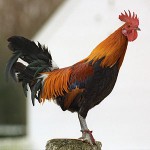 Rare and unusual breeds of chickens make their homes throughout the Historic Area. From ornamental pets to supper-table staples, Manager of Rare Breeds Elaine Shirley takes care of them all.
Rare and unusual breeds of chickens make their homes throughout the Historic Area. From ornamental pets to supper-table staples, Manager of Rare Breeds Elaine Shirley takes care of them all.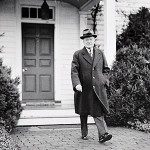 This historic home embodies the story of Williamsburg’s rescue from decay by John D. Rockefeller and W.A.R. Goodwin. Cynthia Nothstine shares the story of the Rockefeller’s beloved country home.
This historic home embodies the story of Williamsburg’s rescue from decay by John D. Rockefeller and W.A.R. Goodwin. Cynthia Nothstine shares the story of the Rockefeller’s beloved country home.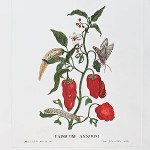 Copperplate engraving is an exacting process that created precise images for an age before sharing pictures was simple. Journeyman engraver Lynn Zelesnikar tells us how it’s done.
Copperplate engraving is an exacting process that created precise images for an age before sharing pictures was simple. Journeyman engraver Lynn Zelesnikar tells us how it’s done.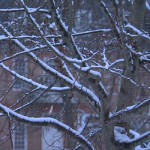 The heart of Christmas remains unchanged, even as each generation lends new customs to the celebration. Historian Lou Powers talks Christmastide in three centuries.
The heart of Christmas remains unchanged, even as each generation lends new customs to the celebration. Historian Lou Powers talks Christmastide in three centuries.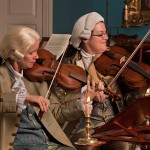 The Governor’s Musick is Colonial Williamsburg’s resident 18th-century musical ensemble. Jane Hanson, Herb Watson, Jenny Edenborn and Wayne Moss perform.
The Governor’s Musick is Colonial Williamsburg’s resident 18th-century musical ensemble. Jane Hanson, Herb Watson, Jenny Edenborn and Wayne Moss perform.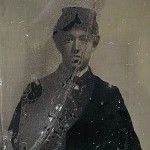 Christmases during the Civil War were marked with equal parts of sadness and hope. “Uncivil Christmas,” a Williamsburg music program, captures the mood in songs of the period. Carson Hudson narrates this musical podcast.
Christmases during the Civil War were marked with equal parts of sadness and hope. “Uncivil Christmas,” a Williamsburg music program, captures the mood in songs of the period. Carson Hudson narrates this musical podcast.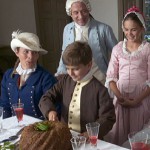 A rich, brandied fruitcake is the centerpiece of Twelfth Night celebrations. Barbara Scherer describes the dessert as it was meant to be.
A rich, brandied fruitcake is the centerpiece of Twelfth Night celebrations. Barbara Scherer describes the dessert as it was meant to be.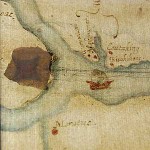 In part two, hidden symbols and invisible ink point to a long-lost fort in North Carolina. Jim Horn concludes the tale of discoveries made and discoveries to come.
In part two, hidden symbols and invisible ink point to a long-lost fort in North Carolina. Jim Horn concludes the tale of discoveries made and discoveries to come.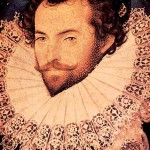 The mystery of the Lost Colony was doomed to remain unsolved, until researchers got curious about patches on an old map. Dr. Jim Horn lays out the story in two parts.
The mystery of the Lost Colony was doomed to remain unsolved, until researchers got curious about patches on an old map. Dr. Jim Horn lays out the story in two parts.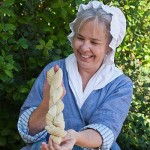 Wool is spun into yarn before it hits the loom. Karen Clancy cards the fibers and feeds the spinning wheel.
Wool is spun into yarn before it hits the loom. Karen Clancy cards the fibers and feeds the spinning wheel.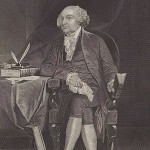 Political parties were new, the losers became Vice Presidents, and negative campaigning was finding its feet in the election of 1796. Professor Jack Lynch has the history.
Political parties were new, the losers became Vice Presidents, and negative campaigning was finding its feet in the election of 1796. Professor Jack Lynch has the history.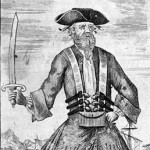 A disgruntled pirate’s haunted history lingers in the town where his shipmates met the hangman. Carson Hudson and Willie Balderson team up for “Pirates Amongst Us.”
A disgruntled pirate’s haunted history lingers in the town where his shipmates met the hangman. Carson Hudson and Willie Balderson team up for “Pirates Amongst Us.”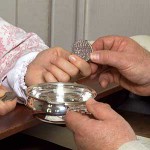 Master Silversmith George Cloyed explains that silver on the shelf is like money in the bank, and a silversmith’s records can reveal a town’s story.
Master Silversmith George Cloyed explains that silver on the shelf is like money in the bank, and a silversmith’s records can reveal a town’s story.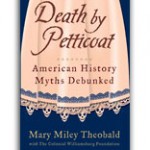 Historical myths can be more appealing than the historic record. Author Mary Miley Theobald tells some of her favorites.
Historical myths can be more appealing than the historic record. Author Mary Miley Theobald tells some of her favorites.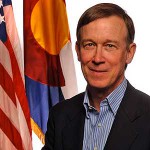 Colorado Governor John Hickenlooper says negative politics erodes citizens’ faith in government. Hear his views on the founders, participation, and local involvement.
Colorado Governor John Hickenlooper says negative politics erodes citizens’ faith in government. Hear his views on the founders, participation, and local involvement.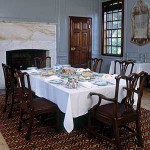 Historic sites can speak volumes if you know what to listen for. Professor Jim Whittenburg on how to get the most out of site visits.
Historic sites can speak volumes if you know what to listen for. Professor Jim Whittenburg on how to get the most out of site visits.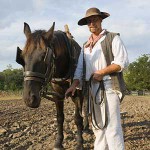 Historic farming retains a connection to field and yield that modern farming does not. Farmer Ed Shultz describes the animals and methods he uses at Great Hopes Plantation.
Historic farming retains a connection to field and yield that modern farming does not. Farmer Ed Shultz describes the animals and methods he uses at Great Hopes Plantation.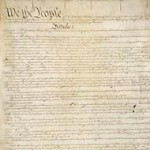 Get to know the Constitution: a document whose genius lies in its malleability. Historian and author Pauline Maier talks ratification.
Get to know the Constitution: a document whose genius lies in its malleability. Historian and author Pauline Maier talks ratification.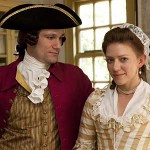 Colonial wives were confined by strict legal codes, but widows and spinsters enjoyed some unexpected freedoms. Author Karin Wulf talks about the outliers in her book, “Not All Wives.”
Colonial wives were confined by strict legal codes, but widows and spinsters enjoyed some unexpected freedoms. Author Karin Wulf talks about the outliers in her book, “Not All Wives.”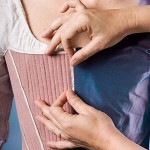 The milliner is mistress of a thousand tasks, making gowns and garments for ladies. Janea Whitacre describes the trade.
The milliner is mistress of a thousand tasks, making gowns and garments for ladies. Janea Whitacre describes the trade. Bruton Parish Church is as storied a building as any in Williamsburg, with a history of idealistic restorations and later revisions. Carl Lounsbury describes the evolution of this living church.
Bruton Parish Church is as storied a building as any in Williamsburg, with a history of idealistic restorations and later revisions. Carl Lounsbury describes the evolution of this living church.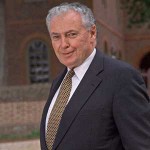 Colonial Williamsburg rises to meet the future with a new mission as a Center for History and Citizenship. Foundation President Colin Campbell describes the shift.
Colonial Williamsburg rises to meet the future with a new mission as a Center for History and Citizenship. Foundation President Colin Campbell describes the shift.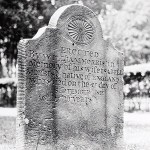 Gravesites tell the stories of the dead and the people who mourned them. Learn about cemetery archaeology and preservation with Jolene Smith and Joanna Green from the VA Department of Historic Resources.
Gravesites tell the stories of the dead and the people who mourned them. Learn about cemetery archaeology and preservation with Jolene Smith and Joanna Green from the VA Department of Historic Resources.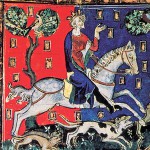 The American Revolution came from an old British tradition. Hear how the English were in the habit of rebelling in “A Very British Revolution,” a tour at The Colonial Williamsburg Art Museums led by Emma Ross.
The American Revolution came from an old British tradition. Hear how the English were in the habit of rebelling in “A Very British Revolution,” a tour at The Colonial Williamsburg Art Museums led by Emma Ross. Vermont Governor Peter Shumlin talks with us about the challenges of applying the founders’ vision to modern governance. Even after two centuries, the America they envisioned still matters.
Vermont Governor Peter Shumlin talks with us about the challenges of applying the founders’ vision to modern governance. Even after two centuries, the America they envisioned still matters.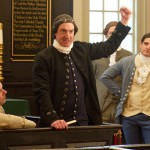 Bringing a touch of myth to traditional history makes for a stable mix in the American memory. Author Gil Klein explains.
Bringing a touch of myth to traditional history makes for a stable mix in the American memory. Author Gil Klein explains.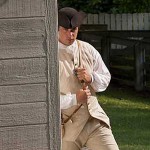 Code names, dead drops, invisible ink, and secret ciphers were all part of the American Revolution. Historian Taylor Stoermer introduces Benjamin Tallmadge, George Washington’s chief intelligence officer.
Code names, dead drops, invisible ink, and secret ciphers were all part of the American Revolution. Historian Taylor Stoermer introduces Benjamin Tallmadge, George Washington’s chief intelligence officer.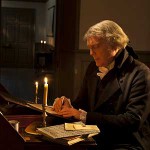 The third president completed studies at William and Mary 250 years ago, and went on to create a college of his own. Professor Susan Kern describes what he learned and what he later built.
The third president completed studies at William and Mary 250 years ago, and went on to create a college of his own. Professor Susan Kern describes what he learned and what he later built.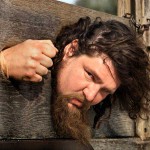 Punishments considered cruel and unusual by today’s standards were commonplace in the colonial period. Historian Martha McCartney describes practices intended to shame, horrify and appall.
Punishments considered cruel and unusual by today’s standards were commonplace in the colonial period. Historian Martha McCartney describes practices intended to shame, horrify and appall.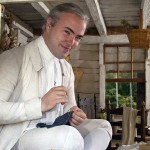 The tailor’s art is all in the cut. Journeyman Tailor Mark Hutter threads the needle of historic fashion.
The tailor’s art is all in the cut. Journeyman Tailor Mark Hutter threads the needle of historic fashion.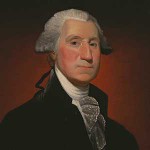 George Washington shares his thoughts on the role of government and his hopes for the future in part two of this listener-question interview. Ron Carnegie interprets the first president.
George Washington shares his thoughts on the role of government and his hopes for the future in part two of this listener-question interview. Ron Carnegie interprets the first president.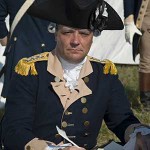 We sit down with the first president and ask him questions submitted by podcast listeners. Listen as Ron Carnegie interprets George Washington.
We sit down with the first president and ask him questions submitted by podcast listeners. Listen as Ron Carnegie interprets George Washington. Feathers, fur, hoofs and horns bring the Historic Area to life. Elaine Shirley, manager of rare breeds, explains how we show happy animals to the public.
Feathers, fur, hoofs and horns bring the Historic Area to life. Elaine Shirley, manager of rare breeds, explains how we show happy animals to the public.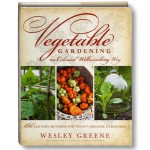 Colonists went green before green was a movement. Learn to keep an organic garden the Colonial Williamsburg way. Master Gardener Wesley Greene talks about history’s methods.
Colonists went green before green was a movement. Learn to keep an organic garden the Colonial Williamsburg way. Master Gardener Wesley Greene talks about history’s methods.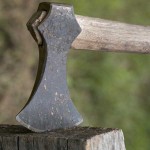 You can’t build a town without wood. Master Carpenter Garland Wood describes a Williamsburg built completely by hand.
You can’t build a town without wood. Master Carpenter Garland Wood describes a Williamsburg built completely by hand.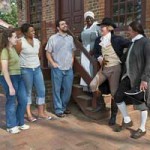 Debates over eternal American values are reborn with every generation. Co-creators Bill White and Bill Wagner help make the connections on a new interactive website.
Debates over eternal American values are reborn with every generation. Co-creators Bill White and Bill Wagner help make the connections on a new interactive website.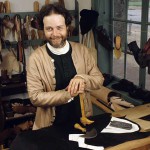 You can call him a shoemaker, you can call him a cordwainer; you can even call him Al. But one thing you must never call him is a cobbler. Master boot and shoemaker Al Saguto discusses his trade in this week’s show.
You can call him a shoemaker, you can call him a cordwainer; you can even call him Al. But one thing you must never call him is a cobbler. Master boot and shoemaker Al Saguto discusses his trade in this week’s show.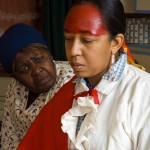 Runaway slave Elizabeth found freedom, family, and equality when she was adopted into the Shawnee tribe. After ten years, she returned to slavery. Hope Smith shares the heartbreaking story behind this selfless act.
Runaway slave Elizabeth found freedom, family, and equality when she was adopted into the Shawnee tribe. After ten years, she returned to slavery. Hope Smith shares the heartbreaking story behind this selfless act. Old-fashioned fire engines had to do much the same jobs as today’s, but they relied on classic physics and plenty of manpower. Curator Erik Goldstein describes the fire engine at the center of a new exhibit at the Art Museums of Colonial Williamsburg.
Old-fashioned fire engines had to do much the same jobs as today’s, but they relied on classic physics and plenty of manpower. Curator Erik Goldstein describes the fire engine at the center of a new exhibit at the Art Museums of Colonial Williamsburg.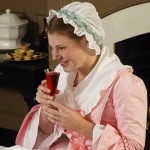 Alcohol quenched nearly every thirst there was in colonial America. Author Ed Crews explains why the preference existed and how the prevailing medical wisdom supported it.
Alcohol quenched nearly every thirst there was in colonial America. Author Ed Crews explains why the preference existed and how the prevailing medical wisdom supported it.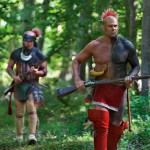 Native American archaeologists reclaim their tribal history in a modern-day dig. Pamunkey tribeswoman Ashley Atkins describes the discoveries.
Native American archaeologists reclaim their tribal history in a modern-day dig. Pamunkey tribeswoman Ashley Atkins describes the discoveries.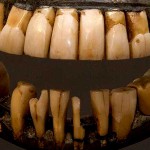 At his inauguration, George Washington had just one tooth left. Mount Vernon curator Laura Simo describes history’s most famous set of dentures.
At his inauguration, George Washington had just one tooth left. Mount Vernon curator Laura Simo describes history’s most famous set of dentures.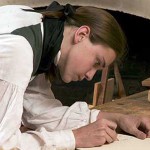 Retired chairman and chief executive officer of the Lockheed Martin Corporation and former under secretary of the Army Norm Augustine says history and science go hand-in-hand.
Retired chairman and chief executive officer of the Lockheed Martin Corporation and former under secretary of the Army Norm Augustine says history and science go hand-in-hand.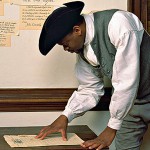 The founders demanded freedom for themselves, but not for their slaves. Early protests show that the enslaved noticed the flaw in the logic. Historian Harvey Bakari introduces the Boston Slave Petitions.
The founders demanded freedom for themselves, but not for their slaves. Early protests show that the enslaved noticed the flaw in the logic. Historian Harvey Bakari introduces the Boston Slave Petitions.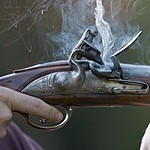 The gun is part of America’s creation story. Gunsmith George Suiter describes the technology of this potent tool.
The gun is part of America’s creation story. Gunsmith George Suiter describes the technology of this potent tool.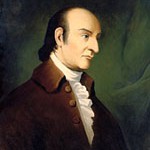 A tale of murder in the final chapter in a great man’s noble life. Chris Hull tells George Wythe’s story.
A tale of murder in the final chapter in a great man’s noble life. Chris Hull tells George Wythe’s story.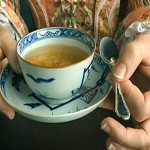 The manners of the parlor codify the feminine culture. Kristen Spivey keeps up appearances in The Polite Academy.
The manners of the parlor codify the feminine culture. Kristen Spivey keeps up appearances in The Polite Academy.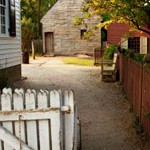 New information continues to emerge from the excavation of Anderson’s Armoury. The tin shop is found, beginning a new exploration of the trade. Meredith Poole updates.
New information continues to emerge from the excavation of Anderson’s Armoury. The tin shop is found, beginning a new exploration of the trade. Meredith Poole updates.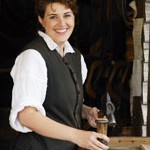 The coopers’s cask is one of mankind’s strongest constructions, and the ubiquitous container for shipping items wet and dry. Meet cooper Ramona Vogel to learn more about the trade.
The coopers’s cask is one of mankind’s strongest constructions, and the ubiquitous container for shipping items wet and dry. Meet cooper Ramona Vogel to learn more about the trade. Hear tales of hair farms, shaved heads, yak fur, and wigs rigged with live ammunition, told by wigmaker Betty Myers.
Hear tales of hair farms, shaved heads, yak fur, and wigs rigged with live ammunition, told by wigmaker Betty Myers.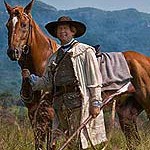 America outgrows her 13 colonies and stretches her boundaries west. CNU Professor Phillip Hamilton explains the sprawl.
America outgrows her 13 colonies and stretches her boundaries west. CNU Professor Phillip Hamilton explains the sprawl.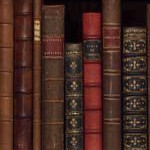 Author Susan Berg on what the 18th century read for work and for fun.
Author Susan Berg on what the 18th century read for work and for fun.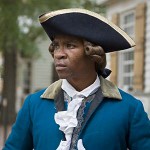 The diverse relationships between slaves and masters were governed by kindness, betrayal, trust, and cruelty. A new Electronic Field Trip, “Harsh World, This World” examines the complex familiarity of slavery.
The diverse relationships between slaves and masters were governed by kindness, betrayal, trust, and cruelty. A new Electronic Field Trip, “Harsh World, This World” examines the complex familiarity of slavery.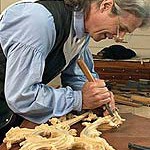 Master cabinetmaker Mack Headley makes fine furniture in the plain and neat Virginia style.
Master cabinetmaker Mack Headley makes fine furniture in the plain and neat Virginia style.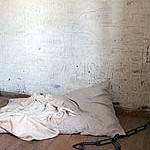 Doctors treating madness in 1773 embraced methods like bleeding, vomiting, restraint and intimidation. Interpreter Donna Wolf researched the topic for her program, “A Method for Madness.”
Doctors treating madness in 1773 embraced methods like bleeding, vomiting, restraint and intimidation. Interpreter Donna Wolf researched the topic for her program, “A Method for Madness.”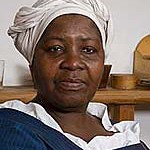 Edith Cumbo was a rare individual in colonial Virginia: a free African woman. Learn about her life and her stature in this interview with Emily James.
Edith Cumbo was a rare individual in colonial Virginia: a free African woman. Learn about her life and her stature in this interview with Emily James.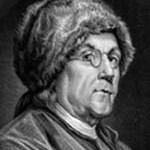 Wry humor softens the sharp wit of this quintessentially American founding father. Interpreter John Hamant talks about portraying Benjamin Franklin.
Wry humor softens the sharp wit of this quintessentially American founding father. Interpreter John Hamant talks about portraying Benjamin Franklin.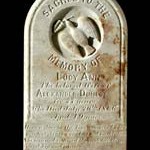 Two gravestones are unearthed during a construction project. Historians and curators work to solve the mysteries below. Emily Williams tells their story.
Two gravestones are unearthed during a construction project. Historians and curators work to solve the mysteries below. Emily Williams tells their story.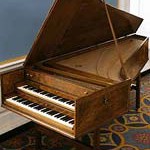 Restoration presents a paradox when repairing old instruments could mean erasing their stories. Conservator John Watson walks the fine line.
Restoration presents a paradox when repairing old instruments could mean erasing their stories. Conservator John Watson walks the fine line.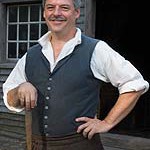 Williamsburg’s blacksmith transforms crude metal into elegant, functional tools. Master Blacksmith Ken Schwarz details the trade.
Williamsburg’s blacksmith transforms crude metal into elegant, functional tools. Master Blacksmith Ken Schwarz details the trade.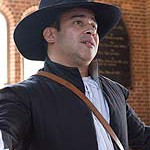 The tale of a Spanish spy reveals England’s fragile hold on the New World. Miguel Girona tells the story of Don Diego de Molina.
The tale of a Spanish spy reveals England’s fragile hold on the New World. Miguel Girona tells the story of Don Diego de Molina.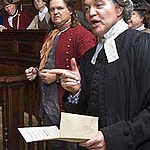 The Constitution guarantees the right to jury trial. What does it mean for a vital democracy? Director of the Center for Jury Studies Paula Hannaford-Agor explains their importance.
The Constitution guarantees the right to jury trial. What does it mean for a vital democracy? Director of the Center for Jury Studies Paula Hannaford-Agor explains their importance.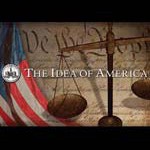 Democracy is an experiment sustained through debate; rights are a privilege earned through participation. Michael Hartoonian introduces The Idea of America.
Democracy is an experiment sustained through debate; rights are a privilege earned through participation. Michael Hartoonian introduces The Idea of America.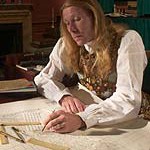 Early maps and prints leave geography for last, focusing first on politics and propaganda. Curator Margaret Pritchard talks about a new exhibit at the Art Museums of Colonial Williamsburg.
Early maps and prints leave geography for last, focusing first on politics and propaganda. Curator Margaret Pritchard talks about a new exhibit at the Art Museums of Colonial Williamsburg.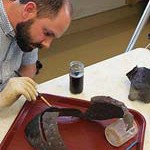 A broken helmet is discarded and forgotten, only to be resurrected 400 years later by curious archaeologists on Jamestown Island. Curator Michael Lavin describes the effort.
A broken helmet is discarded and forgotten, only to be resurrected 400 years later by curious archaeologists on Jamestown Island. Curator Michael Lavin describes the effort.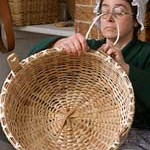 Basketmaking is a tradition born of utility and preserved for beauty. Colonial Williamsburg basketmaker Terry Thon practices a trade passed down through generations.
Basketmaking is a tradition born of utility and preserved for beauty. Colonial Williamsburg basketmaker Terry Thon practices a trade passed down through generations.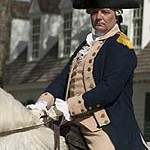 George Washington’s 1796 Farewell Address teems with advice that rings true today. Listen to interpreter Ron Carnegie read excepts from the timeless epistle.
George Washington’s 1796 Farewell Address teems with advice that rings true today. Listen to interpreter Ron Carnegie read excepts from the timeless epistle.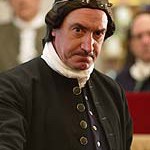 Patrick Henry demands liberty or death in his rousing 1775 speech. Hear the immortal words voiced by interpreter Richard Schumann.
Patrick Henry demands liberty or death in his rousing 1775 speech. Hear the immortal words voiced by interpreter Richard Schumann.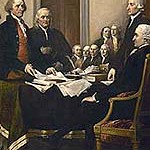 Thomas Jefferson reads the words that started it all: The Declaration of Independence.
Thomas Jefferson reads the words that started it all: The Declaration of Independence.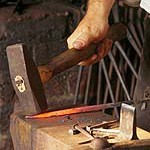 A new armoury complex takes shape on the footings of Anderson’s Forge. Archaeologist Meredith Poole talks about the site’s rebuilt narrative.
A new armoury complex takes shape on the footings of Anderson’s Forge. Archaeologist Meredith Poole talks about the site’s rebuilt narrative.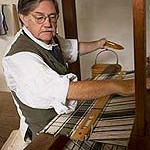 War makes the weaver busy. Cloth for everything from sails to bedsheets is created on his loom. Max Hamrick weaves the tale.
War makes the weaver busy. Cloth for everything from sails to bedsheets is created on his loom. Max Hamrick weaves the tale.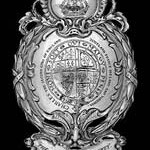 A lost relic returns to the Pamunkey tribe in a new form. American Indian Initiative Manager Buck Woodard guides us through treaties and time.
A lost relic returns to the Pamunkey tribe in a new form. American Indian Initiative Manager Buck Woodard guides us through treaties and time.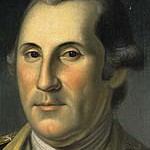 George Washington’s retirement venture had a high alcohol content. Mount Vernon’s Director of Preservation, Dennis Pogue, leads us on a tour through Washington’s whiskey distillery.
George Washington’s retirement venture had a high alcohol content. Mount Vernon’s Director of Preservation, Dennis Pogue, leads us on a tour through Washington’s whiskey distillery.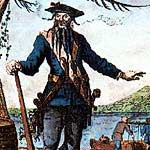 Pirates seek treasure both sunken and sea-going, from the 17th century through today. William and Mary Professor Kris Lane draws the connections between the old traditions and the fresh emergences of piracy.
Pirates seek treasure both sunken and sea-going, from the 17th century through today. William and Mary Professor Kris Lane draws the connections between the old traditions and the fresh emergences of piracy.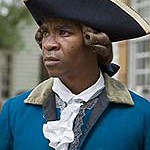 African American history is both discovered in and continued by an ancient oral tradition. Richard Josey describes the process of restoring a community’s voice.
African American history is both discovered in and continued by an ancient oral tradition. Richard Josey describes the process of restoring a community’s voice. Author and historian Alan Brinkley shares his thoughts on the alchemy of luck and chance in the Oval Office.
Author and historian Alan Brinkley shares his thoughts on the alchemy of luck and chance in the Oval Office.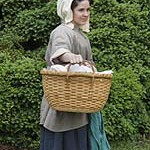 Could the war have been won without women? Author and Professor Holly Mayer thinks not. Learn more about the inner workings of the Continental Army.
Could the war have been won without women? Author and Professor Holly Mayer thinks not. Learn more about the inner workings of the Continental Army.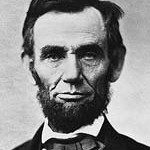 Abraham Lincoln makes good on the founders’ promises of freedom and equality. Author Gordon Wood lays out the Revolutionary origins of the Civil War.
Abraham Lincoln makes good on the founders’ promises of freedom and equality. Author Gordon Wood lays out the Revolutionary origins of the Civil War.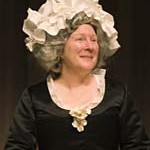 While General George Washington commanded the troops in the field, Martha led the charge at home. Historic Interpreter Lee Ann Rose describes the impact women made during the Revolution.
While General George Washington commanded the troops in the field, Martha led the charge at home. Historic Interpreter Lee Ann Rose describes the impact women made during the Revolution.
